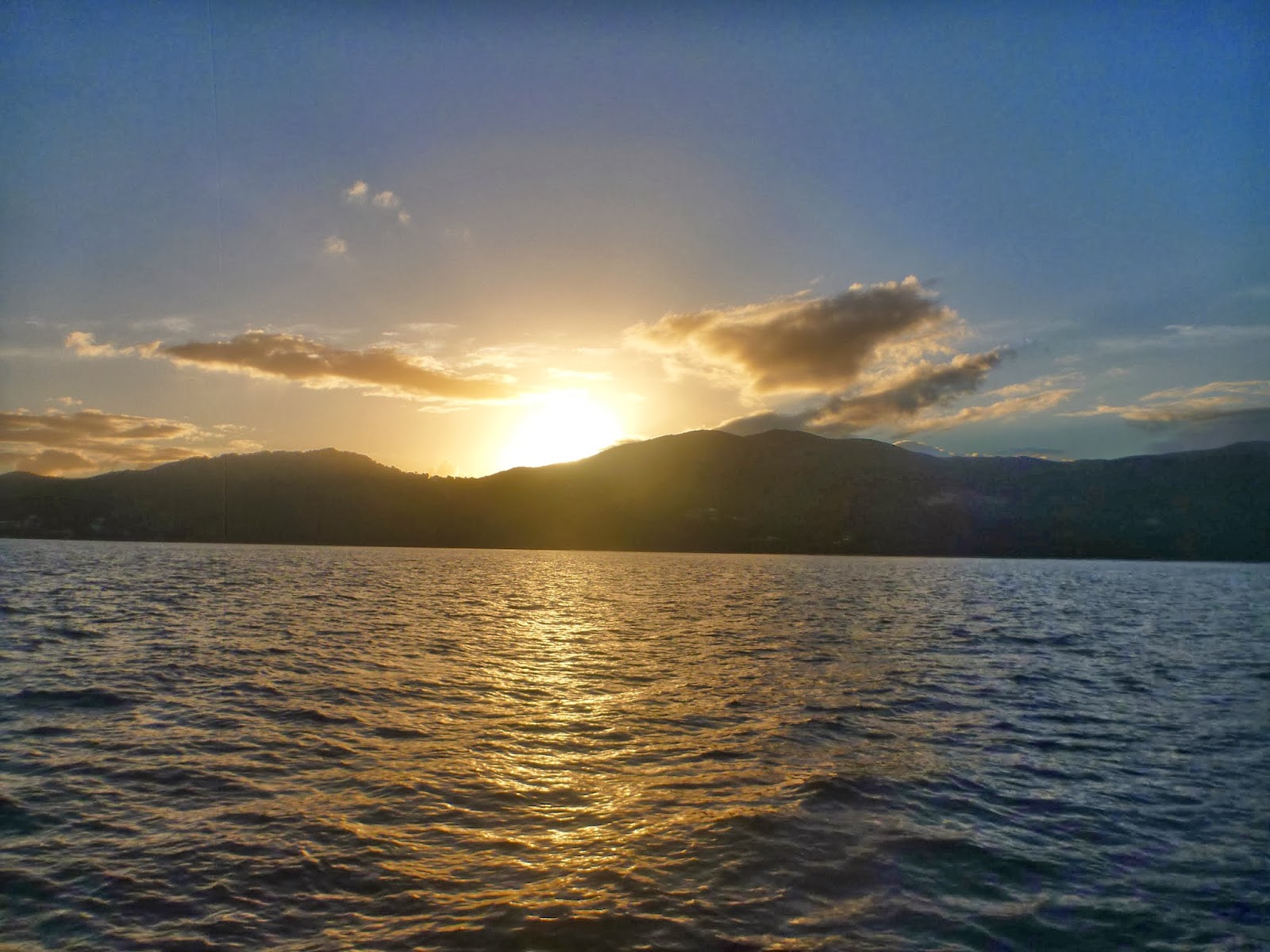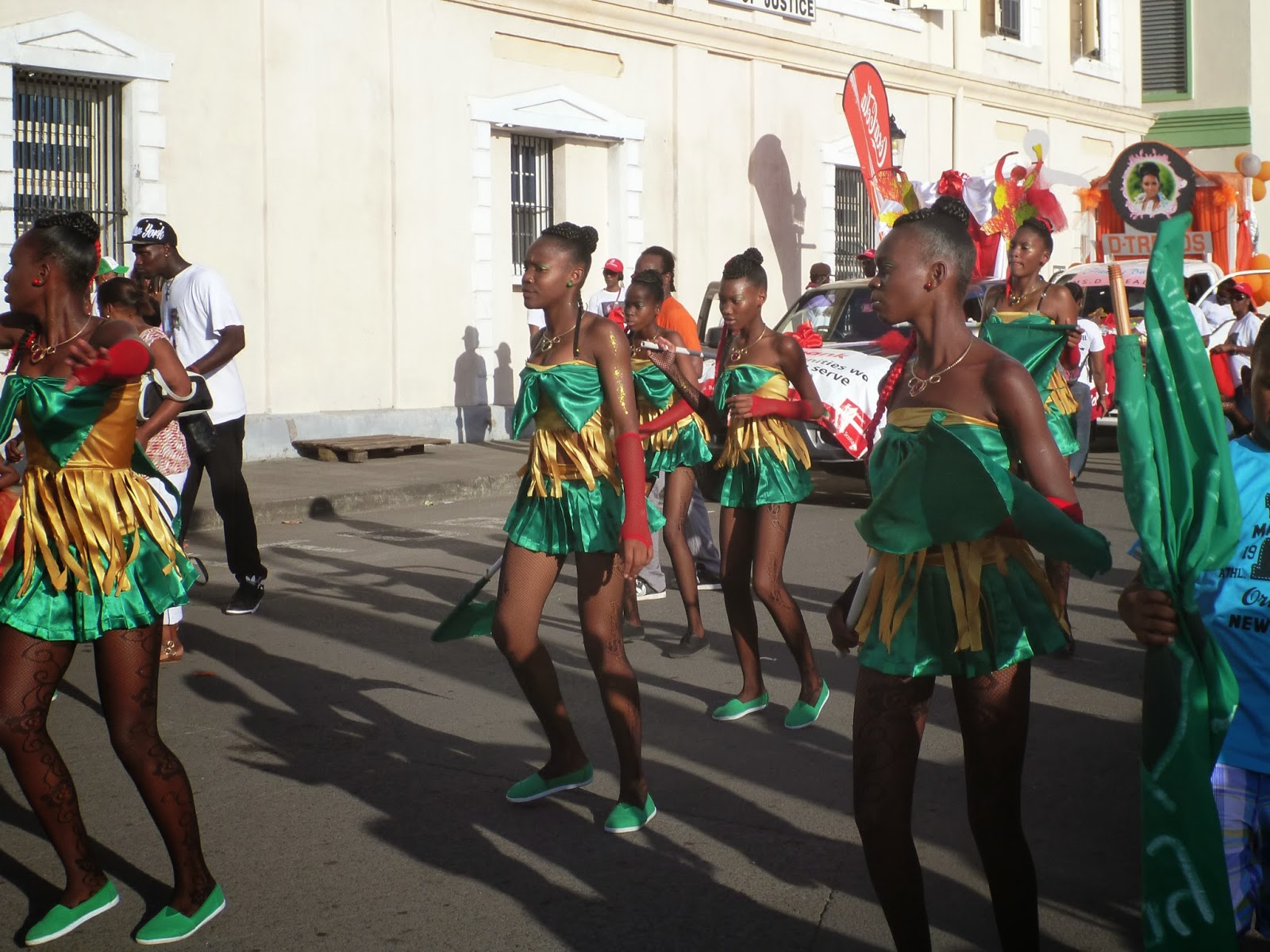Hence, we weighed anchor in the morning and headed over to the Fort de France anchorage. This anchorage is quite nice for an urban area. It is very small given this is the only city on the island, likely only holding 35 boats. It is protected from the prevailing East winds by an old Fort, and has a promenade and a park on its shoreside. The city was not lovely, but was lively enough, with people who live and work there, and little to amuse the many cruise ship passengers. With great effort, we found a nice bistro with a large TV, and were joined by Roman from Barcelona, who also searched the internet to find a place to watch the Barca v. Man City Champions League game. We ended up huddled around a table watching the game on his iphone, as the Bistro was playing the Paris St-Germain Game, of course! Fort de France has a beautiful library, a musee d' ethnographie (en Francais, of course), and good shopping, but not enough to keep us in the city for long. We returned to St. Pierre, very early this time, to a deserted anchorage, which was packed by evening with boats who were either jumping off to the North, like us, or arriving from there. On our way in to St. Pierre the first time, we saw a big jumper, a whale's tail, and a boat stopped ahead of us. On our return approach, we saw 7 boats huddled in a circle, clearly enjoying the whale watching, but they dispersed by the time we got there. Hopefully, we'll have some true whale's tales in the future.
Perhaps the first mate was grumpy, but the only pictures of Martinique are very industrial scenes, grey, smokestacks, and not worth publishing. She forgot her camera on the boat whilst going ashore in St. Pierre, which had potential to be photogenic. St. Pierre is a city that was wiped out by the fire caused by volcanic eruption in 1902, just two years after completion of some major civic projects, including the theatre, completed in 1900. Sadly, the government of the time wished to avoid panic and mass evacuation, so it failed to inform the citizens of the imminent danger of volcanic eruption, and 30,000 people died. There are 5 sites of ruins, comprised of burned stone foundations, including the theatre and the prison beside it, that grace the hillside, and make for a nice walk. There was also allegedly a hiking trail up to a butterfly garden, but we could not do more than get a map of the city out of the French speaking tourist information staff member. We had a heck of a time finding the customs office/tourist info (one and the same!), as it had moved since our guidebook was written, and we asked 4 people along the way, each sending us in a different direction, if they knew at all, so we did not bother trying the local knowledge route.
We arose before the crack of dawn and crept out of the anchorage in the dark, dashing off to Dominica, where we knew we could head to Bala's Bar at the Fort Young Hotel and catch the Canada-US womens hockey Olympic final. The first mate only watches one hockey game every 4 years with intention, and this is the game! We had an exhilarating ride, going through squall after squall, hitting 8.5 knots on the GPS speedometer (accurate!) while overpowered (too much sail up, making the boat less easy to control (stay upright and on course), but we ended up making great time with a third reef, a hankerchief of a jib, doing 6.5 comfortable knots in steady 20 knot winds, gusting to 30 in the squalls, beam reaching. We completed our 35 nm journey, tidied the boat, launched the dinghy, and made our way to town in time for the 1 pm start of the game. The Canadian women did not disappoint! The goaltender for the US team successfully fended off (we think) 26 shots on goal and the Canadians were down 0-2 when they scored their first goal with 3 minutes on the clock in the 3rd period. They scored again, tying the game and earning a sudden death overtime period. Another goal and they won the gold. This game is a good example of why one should never give up hope!
We enjoyed being able to speak English in Dominica, and unlike the first, lengthier visit to Roseau, the Reggae museum/gallery/cafe/bar was open. The menu was extensive and a little expensive and the food was only okay, but the music was great! They were selling prints of Marley and Tosh and Sellasie and there were some framed CD covers: we didn't learn anything in the museum (did we mention the music was great?). They don't make places like this in the French islands. Capt'n says that Dominica does not have a very Caribbean feel: the first mate thinks this is because they are too poor for fripperies like colourful paint and house trim and plaid tablecloths and such.
Another early morning, another inter-island passage and we were back in Guadeloupe, at the Pidgeon Island anchorage, where we were once more enchanted and delighted. We'd missed turtles (our taxi driver/tour guide told us they eat them in Dominica) and found them here in droves. The north also saw the return of Pelicans. We did not wish to leave, but sadly, we were not yet in the country legally, and hence, we apprehensively returned to Deshaies, our memory for our last two windy nights there still acute. Fortunately, we experienced a calm night without any complication of dragging boats.
 |
| Battery Park at Deshaies |
 |
| Above Ground Cemetary at Deshaies |
 |
| The Beast (Gros Morne) we conquered |
 |
| Our Antiguan Backyard |


















































